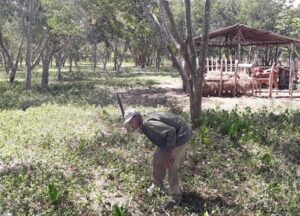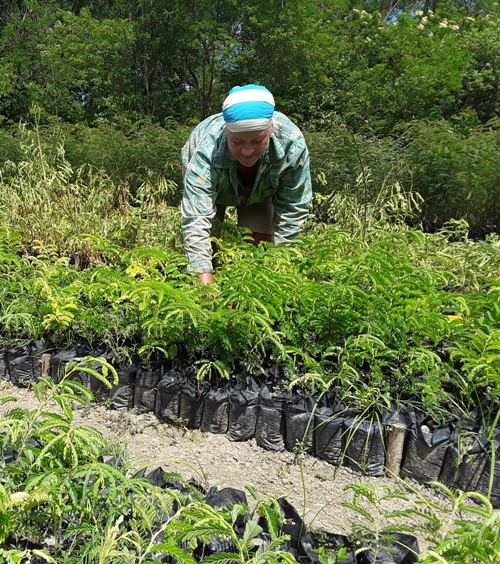
More than 300 hectares of soils affected by salinity were reforested in the Guantanamo Valley from 2008 to date with the use of analog forestry (AF), a silvicultural technology applied in pilot experimental areas of three farms close to suburban towns: La Sombrilla, Cecilia and Paraguay.
This is a method created in the 80s of the last century by Ph.D Ranil Senanayake, from Sri Lanka, with the purpose of recovering the original forest structure, in the medium or long term, on land degraded by planting trees and other similar plants structurally and functionally to those native of the area.
With the sustainable management of native groves, the procedure restores life to the flora and fauna of semi-arid lands included in the so-called Xerophytic Corridor of South Guantanamo, in which low rainfall, high evaporation and low relative humidity predominate, which negatively affects the agro-productive capacity of the soil.
A team of managers and workers from the Silvícola Guantánamo Base Business Unit (UEB) investigated the area of La Herradura, some eight kilometers away from the experimental areas, chosen as a standard forest for its flora and fauna resistant to ecological and climatic conditions.
This area presented similarities with the pilot demonstration zones in terms of soil characteristics, temperature and rainy cycle, which allowed knowing the vegetative structure and biodiversity of the original forest to establish the planning, structure and main functions to be reproduced in the analogue.
Where there was no or little typical savannah vegetation (plain with grasslands and few trees), the farmers and their families dedicated themselves to restoring nature, livestock, horticulture and other crops mainly for self-consumption.
Today about 30 species trees grow there, such as mango, anon, sapote, mahogany, guayacán…, interspersed with coriander, chives, plantain, cabbage and eggplant plantations, the manager stressed.
After 15 years of successful application of AF, the gradual metamorphosis of the Environment is visible in those areas near the Guantanamo City, after enormous efforts of farmers, who recover the vegetal layer and improve the soil with the use of organic fertilizers such as compost and worm castings.

There the farmers also plant natural herbs such as French oregano, caña santa, romerillo, sour orange, mint, aloe vera, vicaria, cordovan and water grass, while they diversify the flora with roses, jasmine and daisies, with the reappearance of zunzunes, hummingbirds, butterflies, and bees that help pollination.
The Ministry of Agriculture estimates that more than 17,000 hectares of soil are affected by salinity in the Guantánamo Valley. This situation could be reversed with physical, chemical, hydraulic methods and expensive electronic techniques that are impossible to apply due to the tightening of the economic, commercial and financial blockade imposed by the United States against Cuba.
In this sense, the generalization of analog forestry would be a viable ecological option to recover unproductive land in the province and the country, with notable benefits for nature and communities.